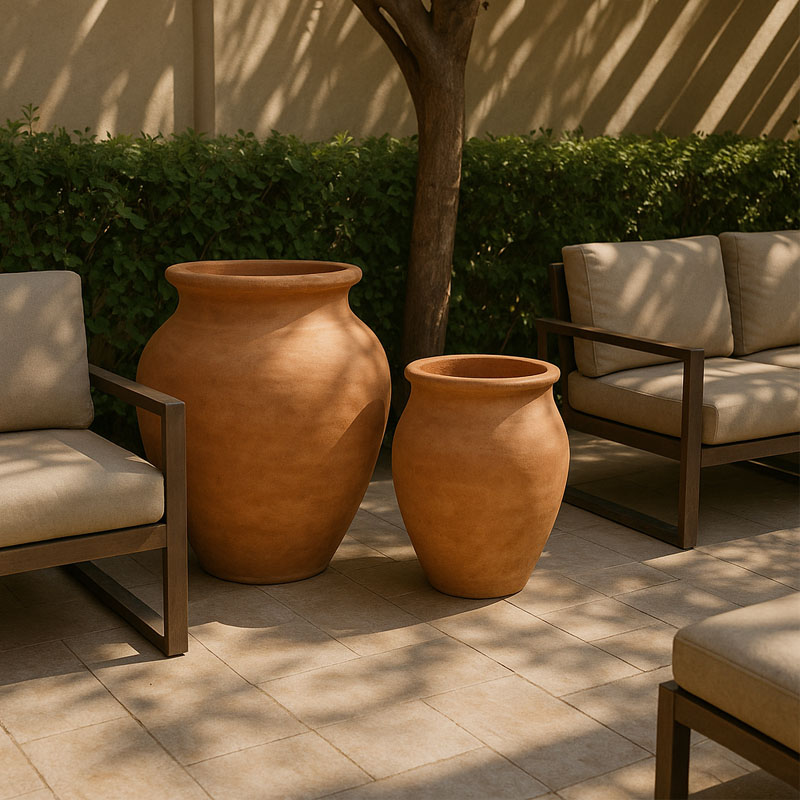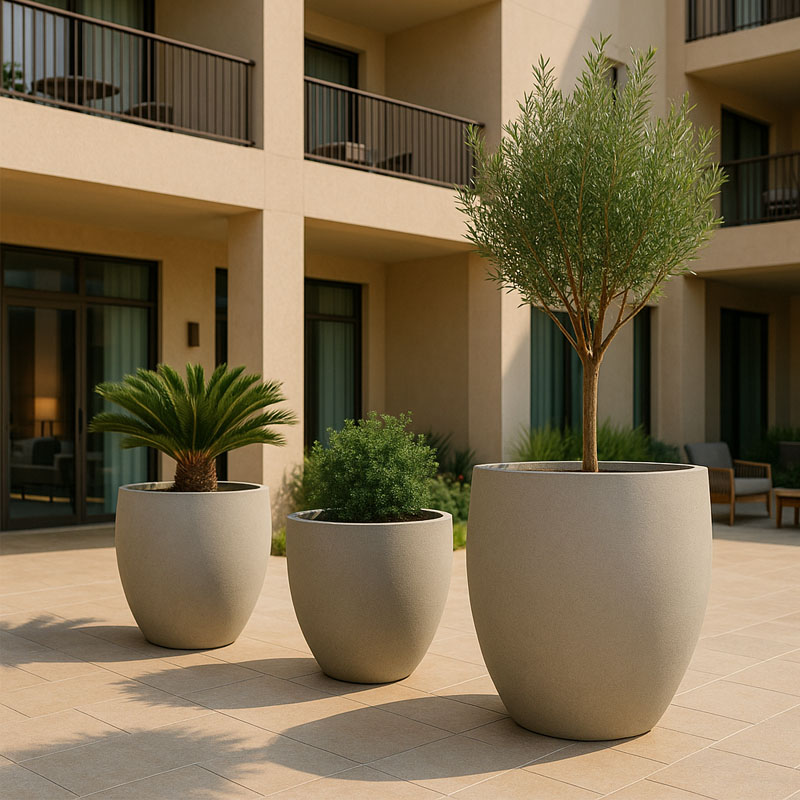
Landscape Architect FAQs: Solving Planter Problems in the UAE Heat
Designing landscapes in the UAE isn’t just about aesthetics, it’s about endurance. With searing temperatures, intense UV exposure, and demanding client expectations, landscape architects need more than beautiful planters, they need smart, heat-resistant solutions that last.
In this blog, we tackle the most common questions and pain points faced by UAE-based landscape professionals and explain why GRP (Glass-Reinforced Plastic) planters are quickly becoming the go-to choice for design-conscious, performance-driven projects.
FAQ #1: How do I prevent root damage in high-heat zones?
The Problem:
Concrete, metal, or clay planters heat up fast under the UAE sun. Soil temperatures rise, damaging root systems especially in exposed rooftops, pool decks, and entry plazas.
The Solution:
Desert Pottery’s GRP planters are made from low thermal conductivity material that protects roots from extreme heat. Their structural composition minimizes heat transfer, making them ideal for hot climates. For outdoor applications, we also recommend finishes painted with weather-resistant exterior-grade paints, offering more durability against sun and heat compared to interior-grade coatings.
FAQ #2: Can I customize textures, shapes, and finishes to suit my design language?
The Problem:
Generic Pots limit creative freedom. Imported ceramics or concrete options come with minimal flexibility and long lead times.
The Solution:
GRP planters are fully customizable from geometric to organic shapes, with sand, matte, ribbed, or smooth finishes. At Desert Pottery, we offer in-house manufacturing in the UAE, so you get fast turnarounds and tailored solutions.
✅ Need a ribbed finish in sandstone beige for a resort? Done.
✅ Elliptical shape in charcoal grey for a villa garden? We mold it.
FAQ #3: How do I balance form, function, and durability?
The Problem:
Clients want sculptural planters that last but many decorative materials chip, fade, or crack. You’re stuck between design intent and practicality.
The Solution:
GRP provides an ideal balance of strength and style:
- Lightweight (easier to transport and install)
- Weatherproof (no cracking, chipping, or flaking)
Seamless finishes that retain their look for years
FAQ #4: Will the finish and color hold up outdoors?
The Problem:
Nothing ruins a space faster than a planter with faded paint or peeling texture.
The Solution:
To ensure your planters retain their look in full-sun or exposed settings, we recommend using high-performance exterior-grade paints that are formulated to withstand outdoor conditions. These finishes offer better protection against sunlight, temperature fluctuations, and humidity—helping your planters maintain their visual impact for years to come.
Tip: Opt for light-colored finishes like matte white or beige to reflect heat and preserve root health.

FAQ #5: How do I specify planters that won’t become liabilities during maintenance?
The Problem:ss
Heavy, fragile, or porous pots lead to breakage, leaks, and complaints from facility teams.
The Solution:
GRP is lightweight and non-porous, making it easy for facility managers to maintain. It resists staining, doesn’t crack, and doesn’t leach salt into the soil.
We also provide technical datasheets and on-site consultations to help you specify accurately.
Final Takeaway: Smart Design Begins with Smart Materials
As a landscape architect, your planter choice directly affects:
- Plant health and survival
- Visual harmony with the site
- Long-term client satisfaction
With Desert Pottery’s GRP planters, you get design freedom + climate resilience + local support.
Useful Links

